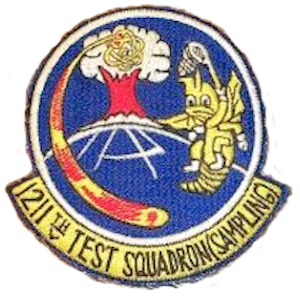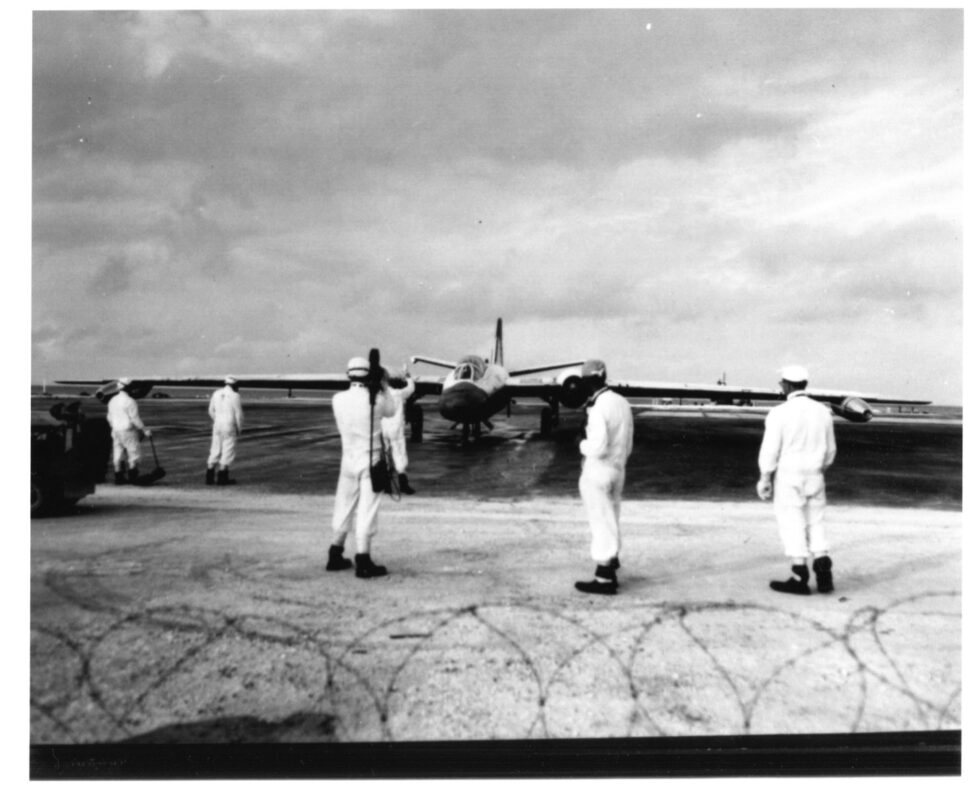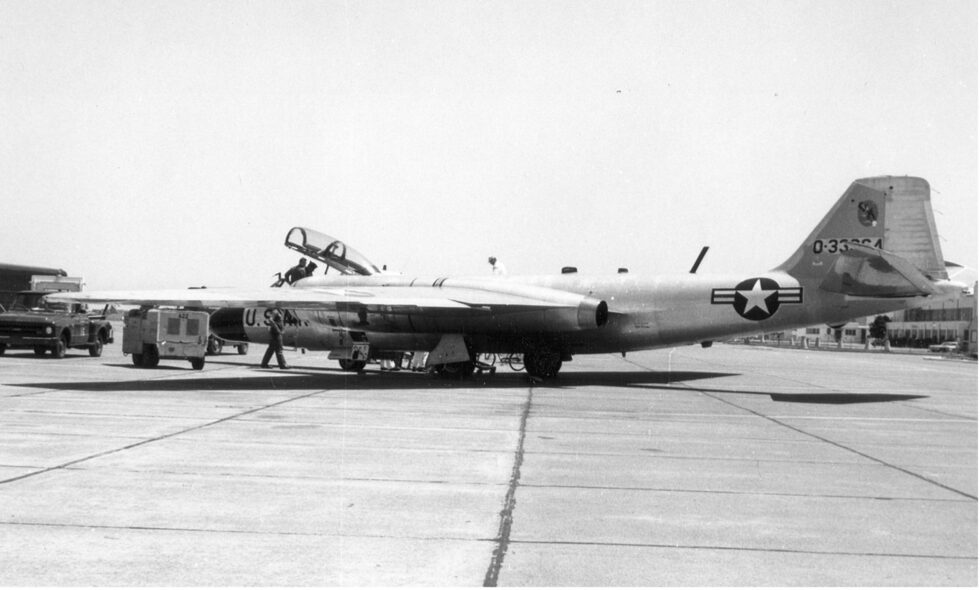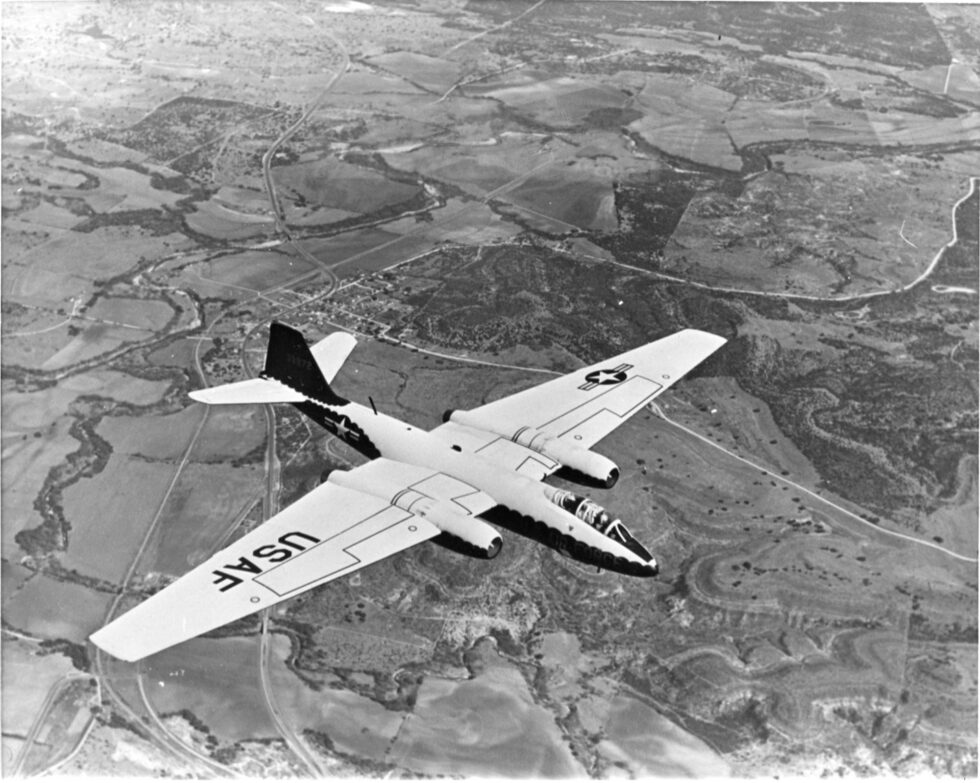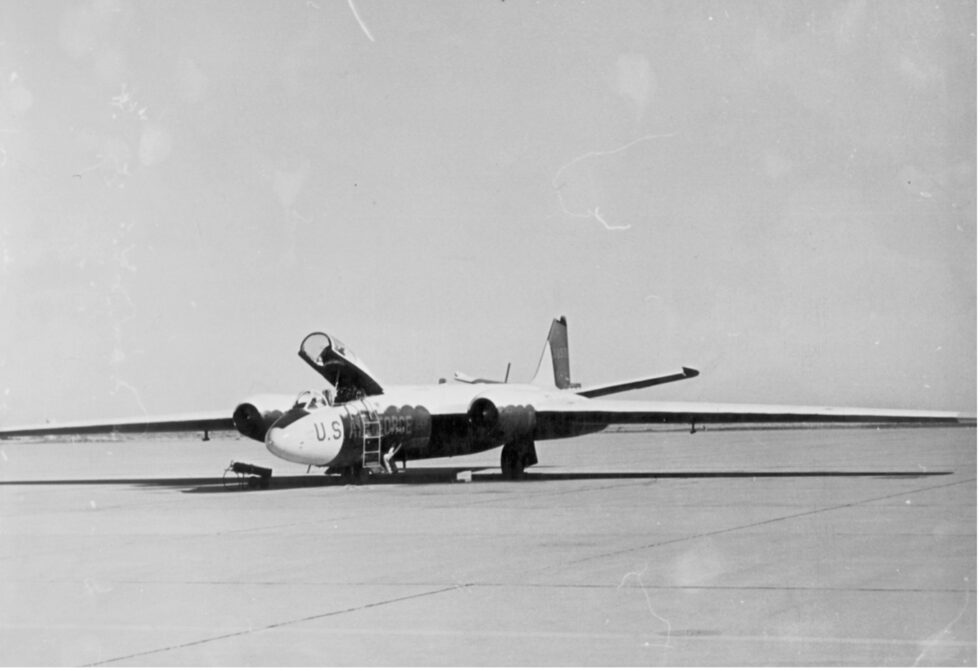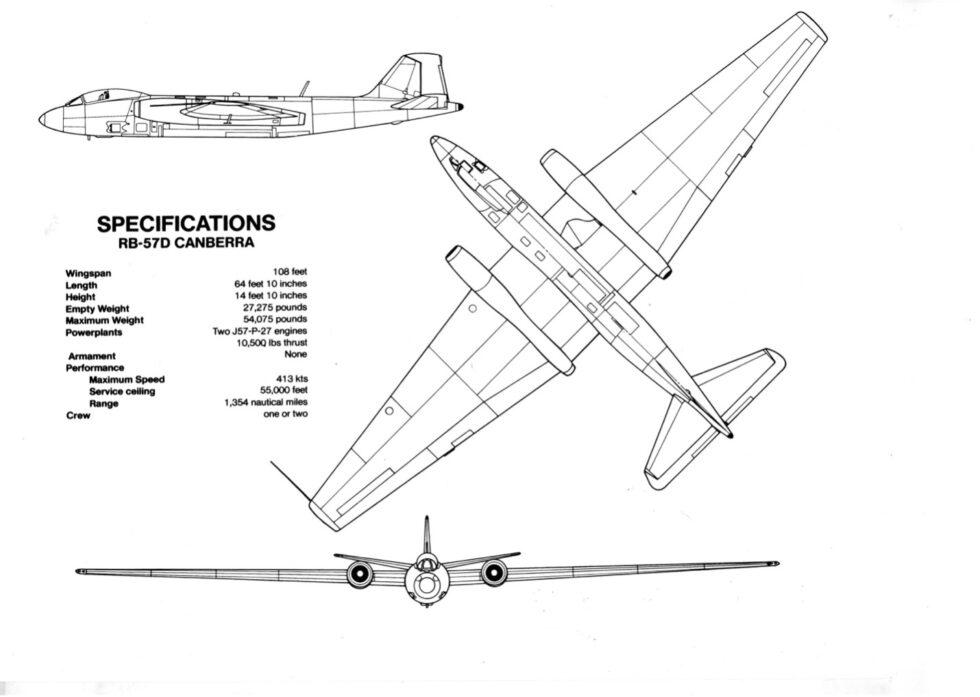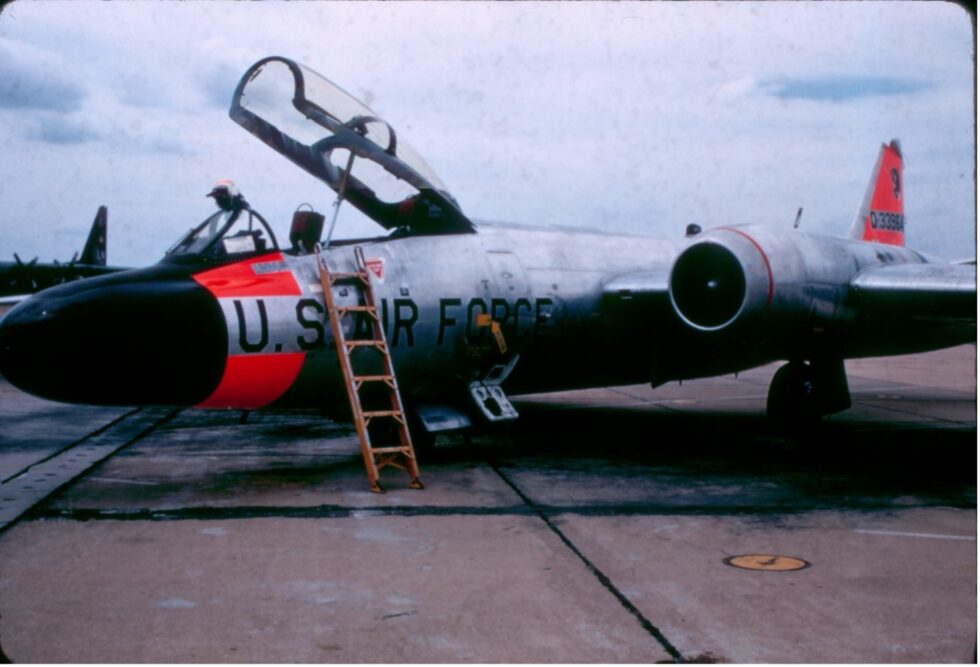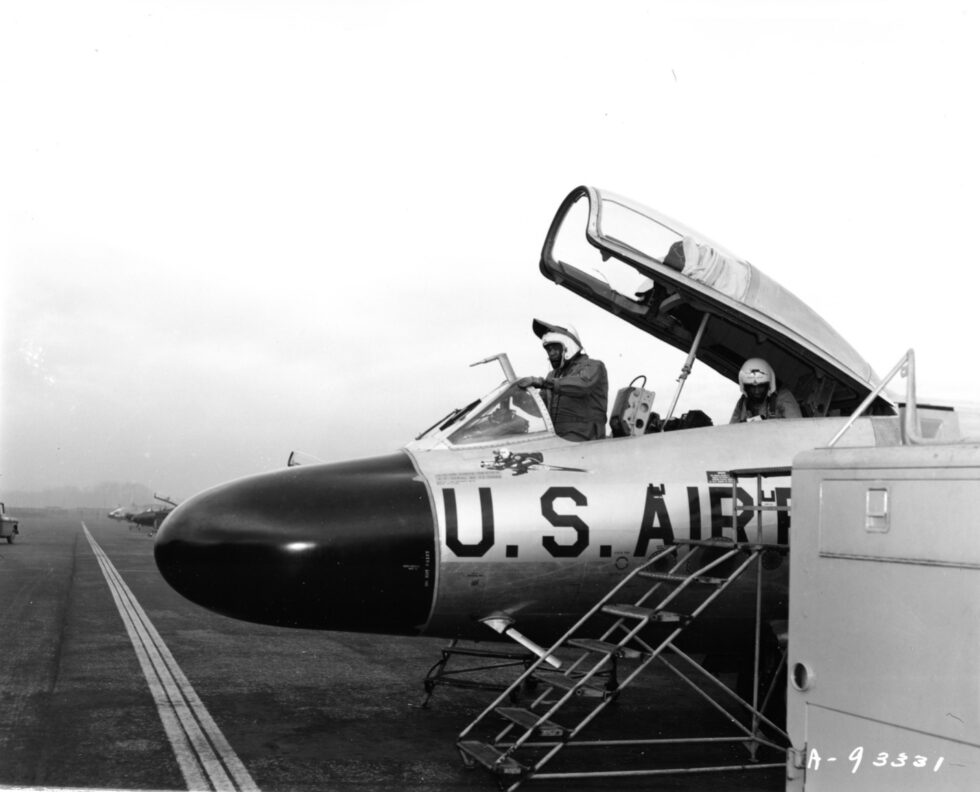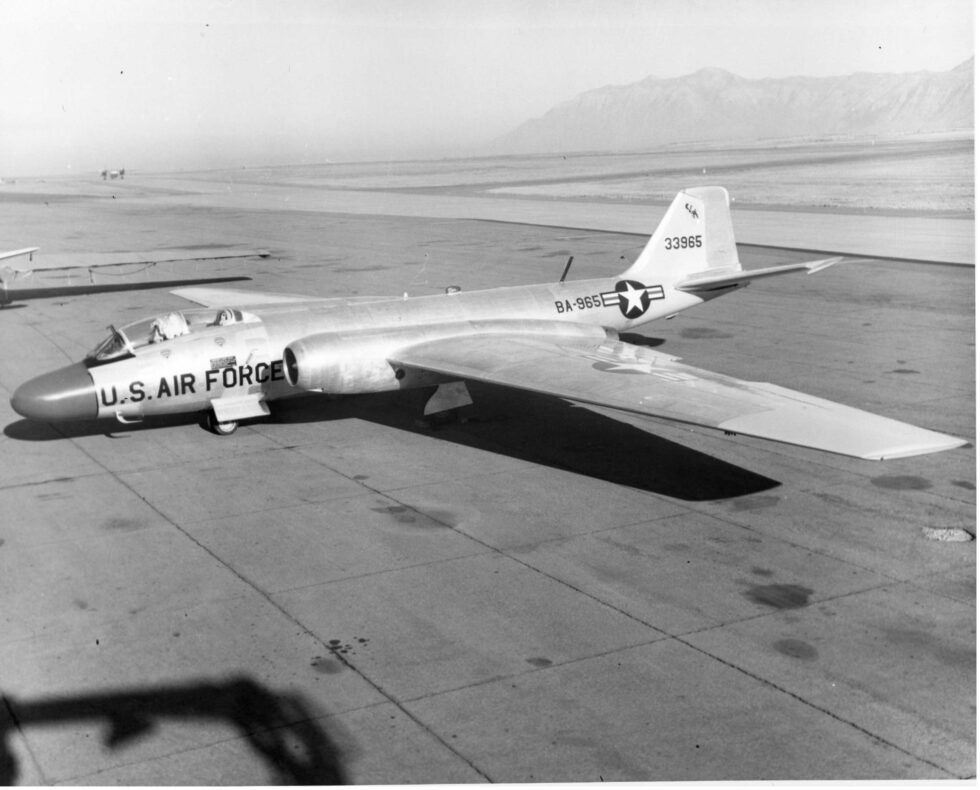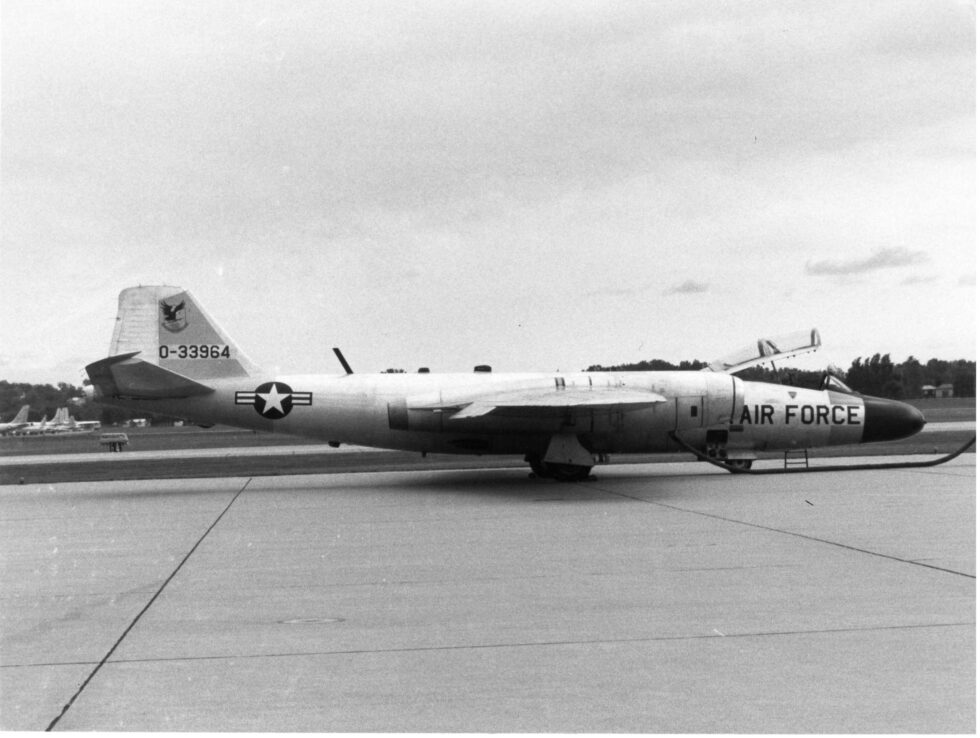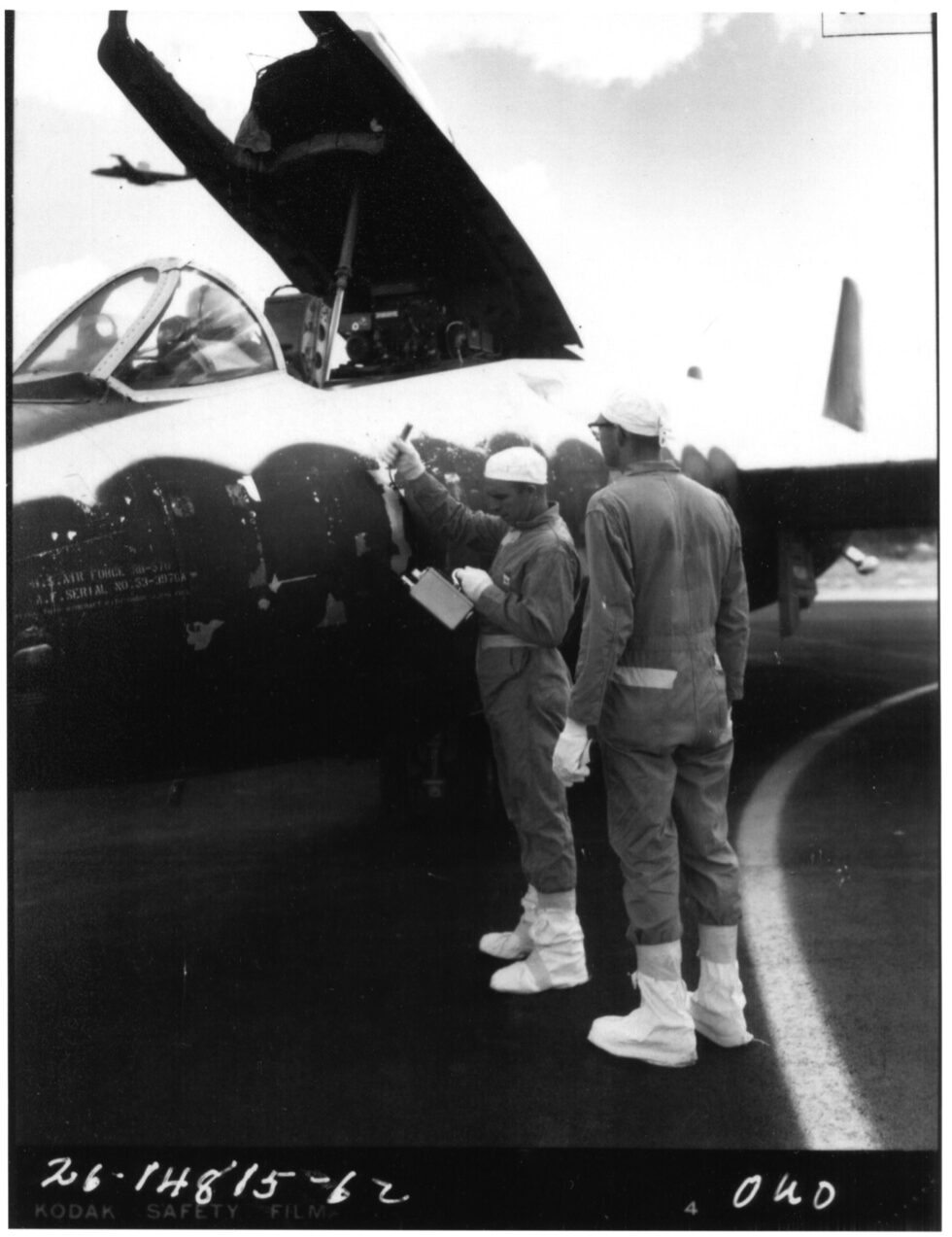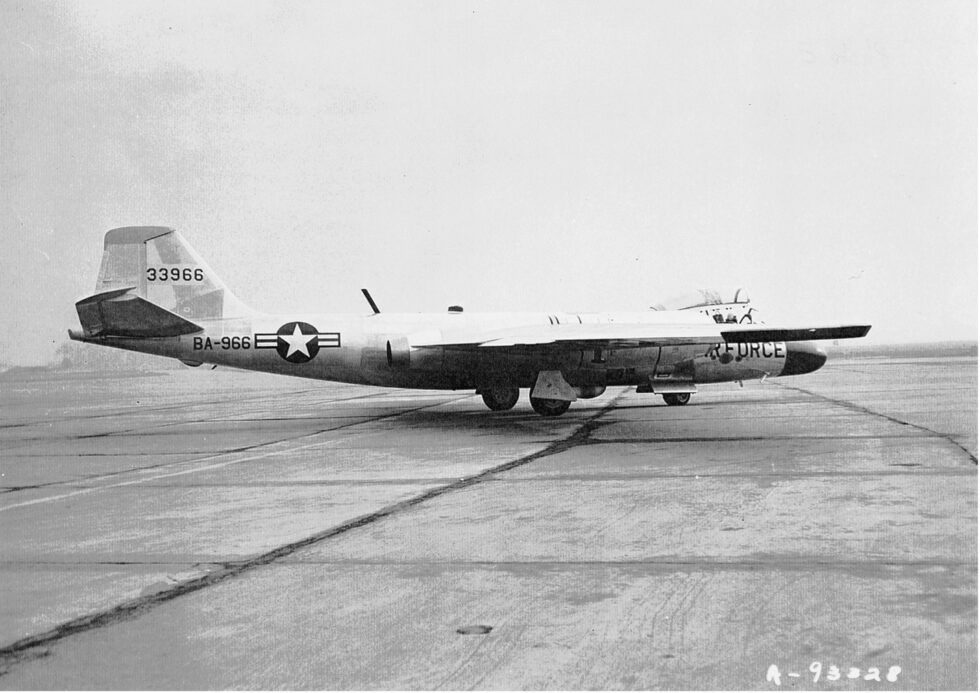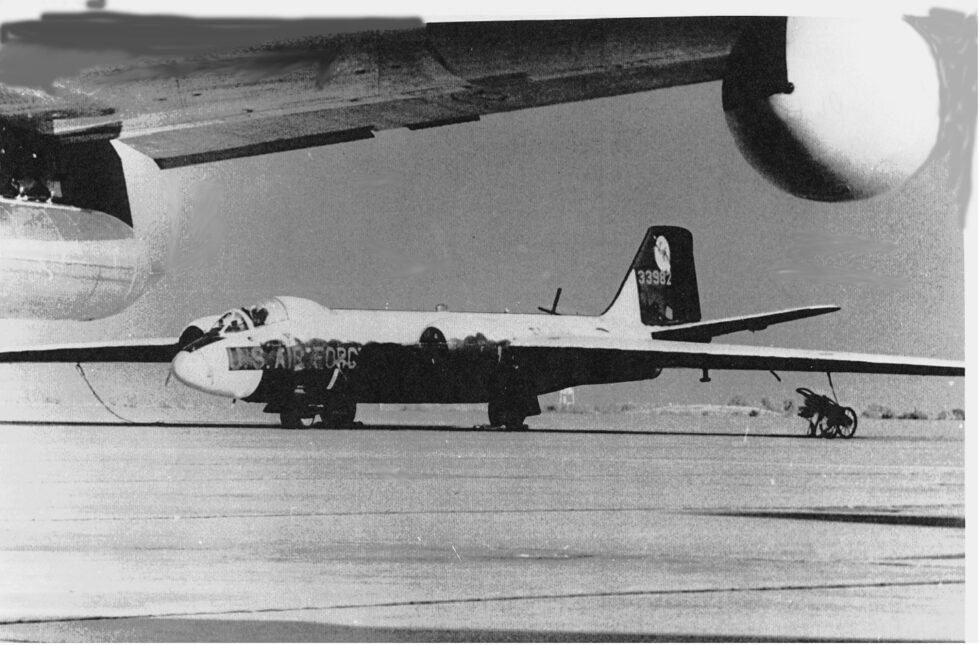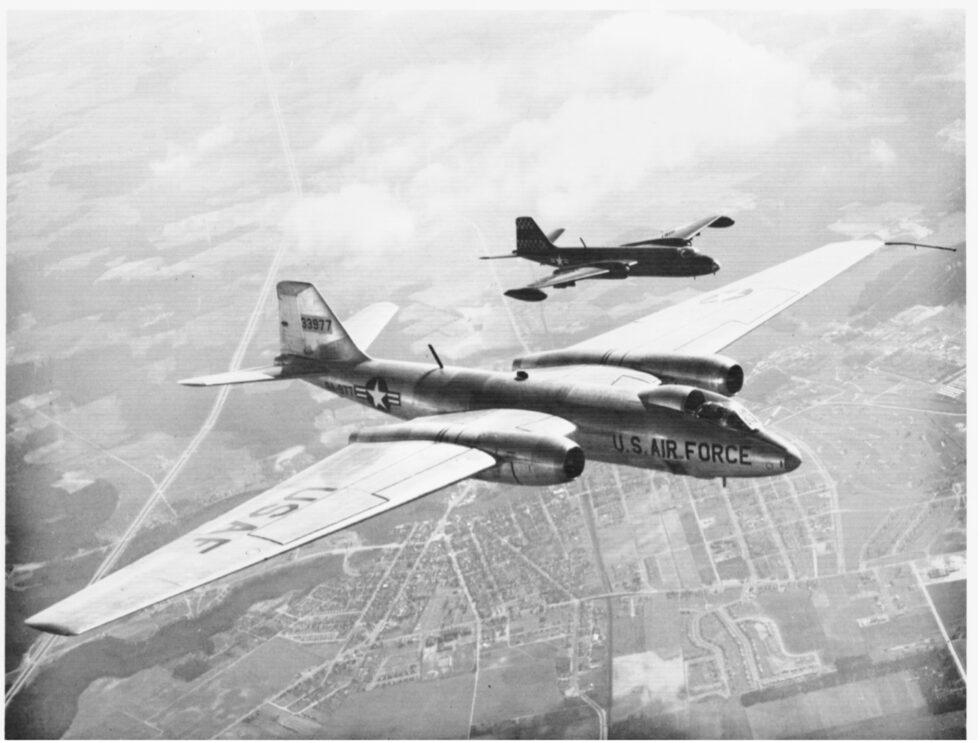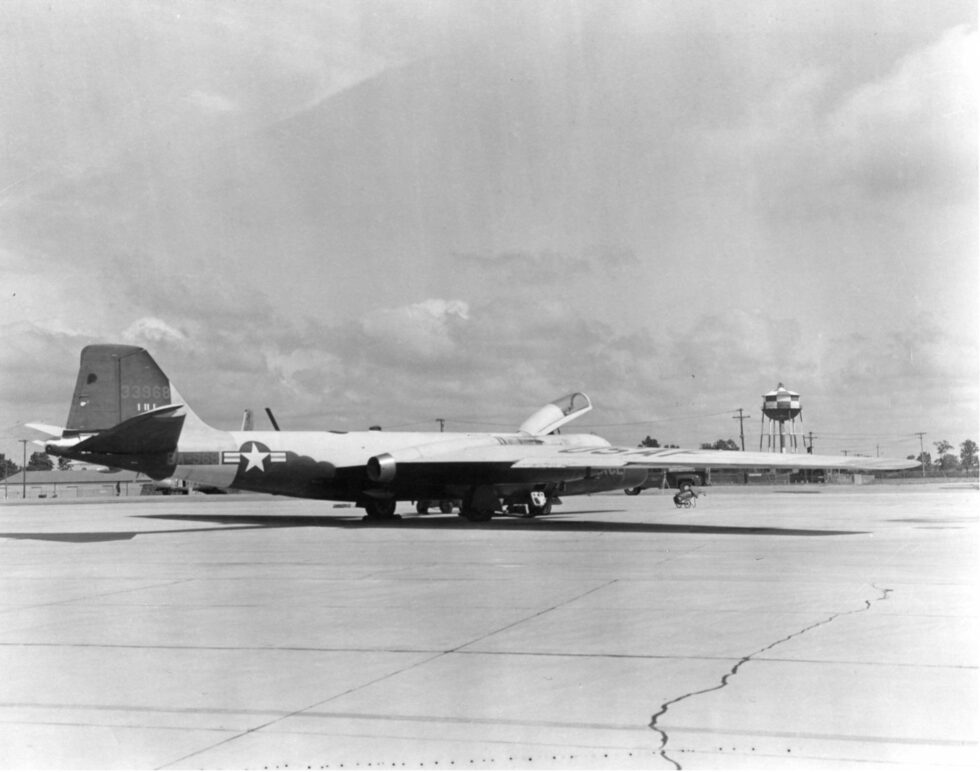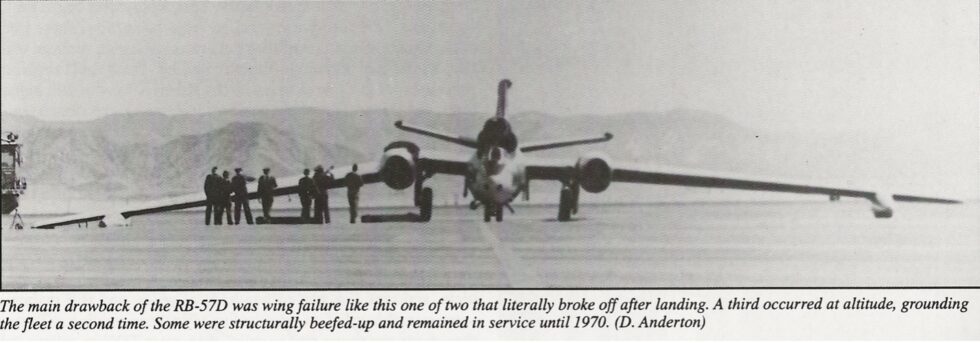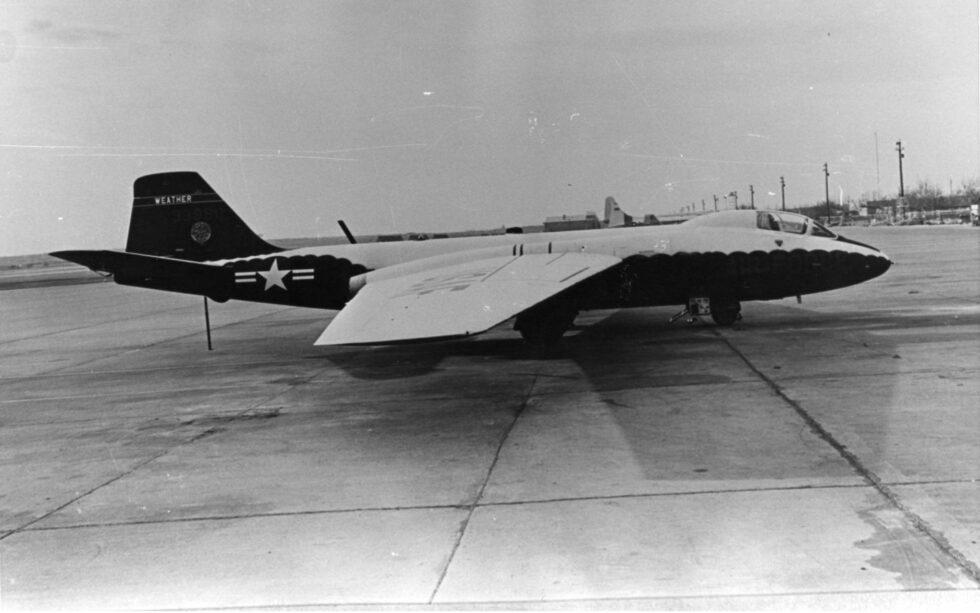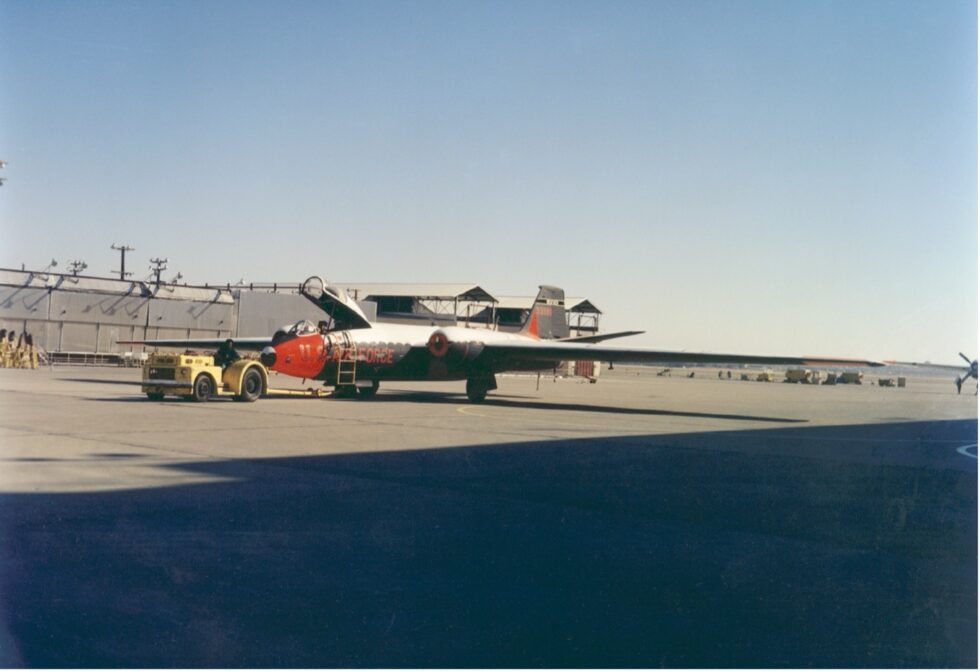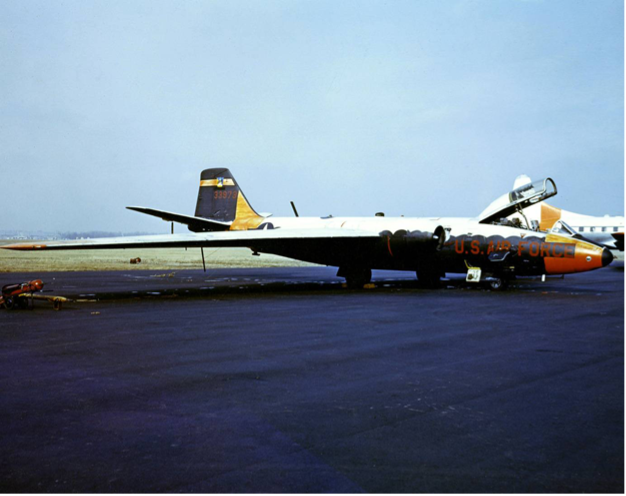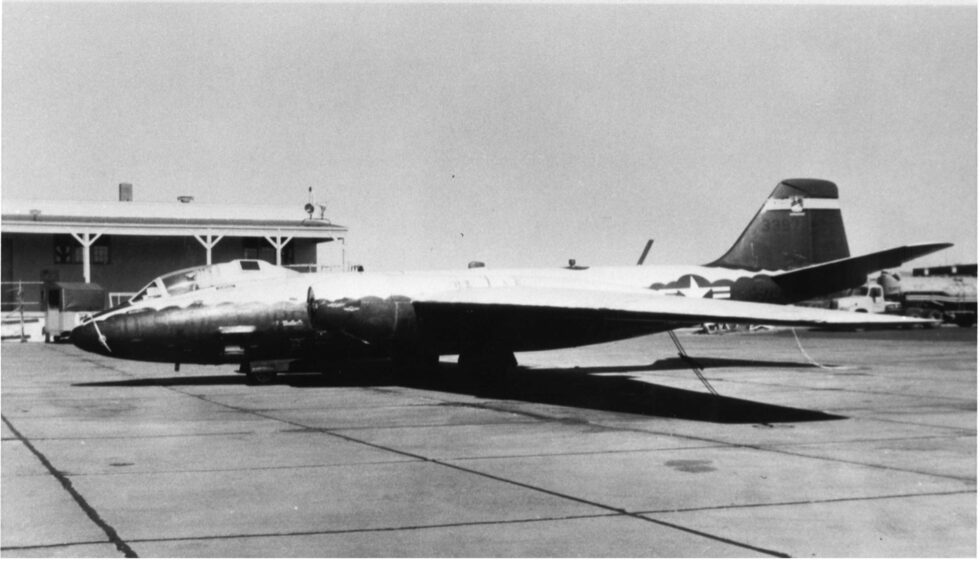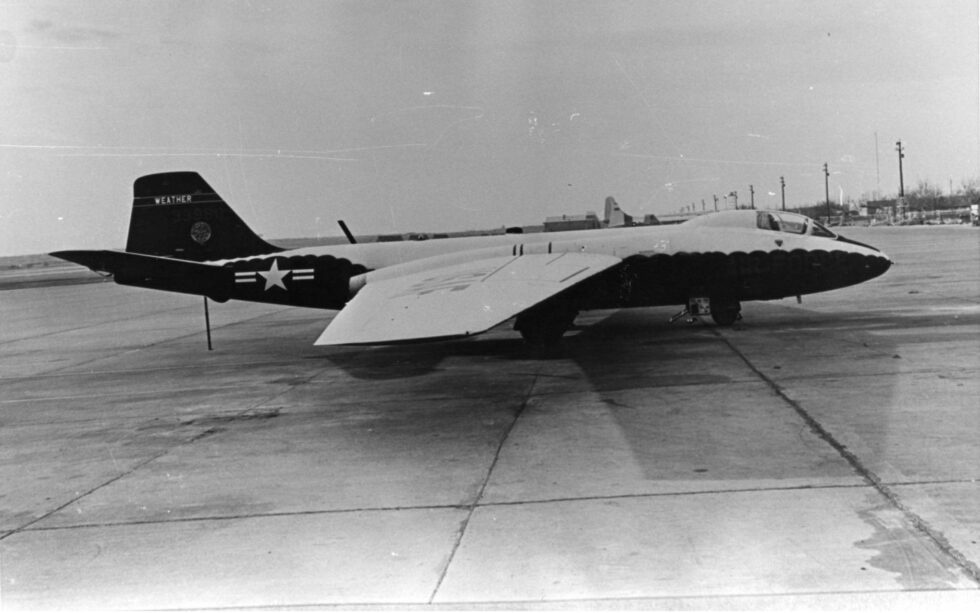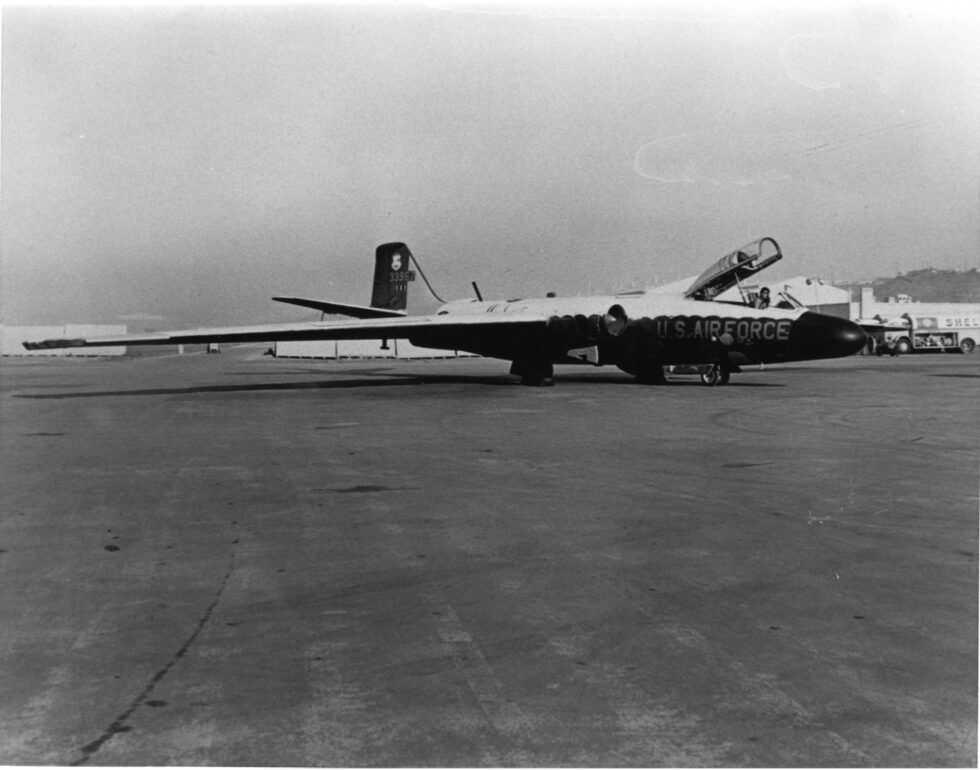USAF 4926 TS (S) Martin RB-57D Canberra
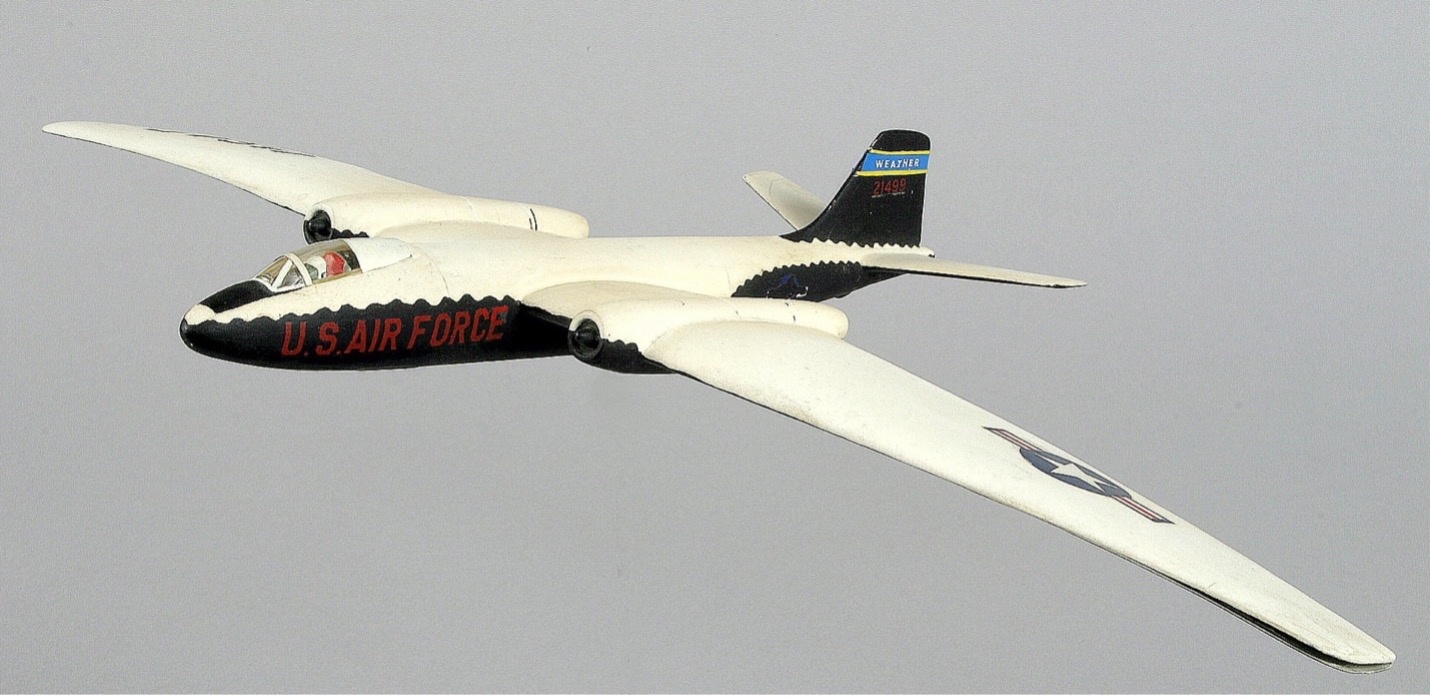
H. Davidson
1/72
04/01/1965
historical significance
First Albuquerque Visit: 1957
Additional Information:
The Martin RB-57D Canberra was a specialized high-altitude strategic reconnaissance aircraft developed from the Martin B-57 Canberra tactical bomber which was a licensed version of the English Electric Canberra. It was used by the United States Air Force (USAF) beginning in 1957 and was extensively used for reconnaissance and sampling until the Lockheed U-2 became operational.
The RB-57D was built primarily as a high-altitude reconnaissance aircraft. The design met the requirements of 1952 USAF study funded by the Wright Air Development Center for a turbojet-powered special reconnaissance aircraft with a radius of 2,300 miles that could operate at altitudes up to 65,000 feet. Because of the extremely high operational altitude it was determined that no defensive armament would be needed to protect the aircraft. The RB-57D was unique and set the stage for high-altitude reconnaissance operations in the rarefied air of the stratosphere. Preliminary specifications were prepared by the Air Force on March 27, 1953 and the project was carried out in high secrecy.
The basic B-57 Canberra design was used as a starting point for the D model but several significant changes were incorporated with the most obvious being the greatly enlarged wing. The wingspan of the B-57 was lengthened by 42 feet to a length of 106 feet overall. The chord of the wing was also increased, which combined with the increased length gave the wing a very high lift capability. The second major change to the RB-57D was the substitution of Pratt & Whitney J57 engines instead of the Wright J65 engines that were used on all earlier B-57 models. The J57 engines produced about 10,000 lb. of thrust each. Other significant changes to the D model included the removal of all fuselage fuel tanks along with the removal of all defensive armament and the bomb bay which was replaced by avionics equipment. There were 20 RB-57Ds built and they included four basic variants with each one having mission specific changes incorporated into the design. The first RB-57D flew on November 5, 1955 and the aircraft was active from 1957 until 1963.
The 4926th Test Squadron (Sampling) at Kirtland Air Force Base in Albuquerque, New Mexico was organized on April 1, 1953. The RB-57Ds assigned to the squadron (later the 1211th Test Squadron), participated in the support of atomic bomb tests at Eniwetok Atoll in the Marshall Islands and at the AEC testing range in Nevada from 1957 until 1963. The high flying capability of the RB-57Ds allowed them to get nuclear particle samples from high in the atmosphere as part of the post-detonation analysis. Six other RB-57Ds were used to monitor the last series of American atmospheric nuclear tests which took place in 1962.
The 1211th Test Squadron is an inactive United States Air Force unit that was designated 1211th Test Squadron (Sampling) on August 16, 1961. It was last assigned to the 9th Weather Reconnaissance Group while stationed at Kirtland AFB and the unit was inactivated on June 8, 1963. Three RB-57Ds were assigned to the 1211th Test Squadron (Sampling) of the MATS Air Weather Service at Kirtland AFB and they were re-designated the WB-57D.
With the end of atmospheric nuclear testing in 1963, the 1211 TS (S) was discontinued and the personnel and aircraft were reassigned to the 58th Weather Reconnaissance Squadron. The 58th Weather Reconnaissance Squadron (MATS) was attached to Kirtland AFB and continued to use these aircraft for taking air samples to detect airborne radiation. Some of the RB-57D’s assigned to Kirtland AFB include aircraft numbers A135461, O-33851, 21499, 21-503 and BA-569.
One photo below shows the RB-57D that suffered a wing failure upon landing at Kirtland AFB in the early 1960’s. The pilot of that aircraft was Capt. Harry G. Howell Jr. and the RB-57D was by then assigned to the 1211th Test Squadron (Sampling).

